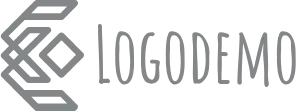Discover a striking design for your WordPress site!
Transform your WordPress website design with a bold and minimalist layout that grabs attention. This approach features a multi-column arrangement where the left section showcases key statistical data, and the right highlights valuable partnerships.
Layout analysis
Overall structure
- Well-defined multi-column layout: Seamlessly divides your content into two sections, enhancing focus and clarity.
Arrangement
- Left section: Displays three stacked rows with data like “Employees,” “Awards,” and “Years.”
- Right section: Features a “Our partners” heading alongside partner logos, adding a touch of credibility.
- Asymmetrical choices: Creates visual interest and highlights critical information.
Element and feature description
Visible elements
- Left section: Engaging text blocks with bold numbers and clear labels.
- Right section: Partner logos and textual content for a professional look.
Interactive elements
- The design is static yet invites exploration of your content.
Typography
- Sans-serif fonts enhance readability, with bolder text for impact.
Icons/graphical elements
- Clean partner logos blend with the minimalist design.
Image details
- Flat logos with no borders, aligning with modern trends.
Unique design aspects
Standout choices
- Black background and contrasting text for maximum impact.
Hover effects/animations
- Emphasises straightforward presentation with simplicity.
Responsive design
- The adaptable columns ensure a seamless experience across devices, making it perfect for any WordPress website.
Accessibility considerations
- High contrast improves readability for all users, aiding those with visual impairments.
Overall design style
Design style
- Minimalism: Focuses on clarity and user-friendly navigation.
Visual hierarchy
- Guides your audience from statistics to partnerships, maximising engagement.
Use of white space
- Enhances readability and distinguishes each section.
10 ways to organise content in WordPress
Categories and tags
Use categories to group related posts, and tags to connect posts across different categories. This helps users find relevant content easily.
Custom post types
Create specific content types like portfolios or testimonials, offering structured organization and better content management.
Menus
Utilise menus for intuitive navigation, helping visitors explore your site effortlessly.
Widgets
Enhance your sidebar or footer with widgets, displaying popular posts, recent comments, or subscription options.
Page templates
Use specially designed templates for different sections of your site, maintaining design consistency.
Shortcodes
Embed complex content like forms or videos using shortcodes, simplifying the process without needing technical skills.
Content calendar
Plan, schedule, and organize your content publication to keep your strategy on track and consistent.
Plugins
Add plugins for additional content organization functionalities, like directory listings or classified ads.
Breadcrumbs
Implement breadcrumb navigation to show users their location within the site, enhancing the user experience.
Sticky posts
Highlight important blog posts by keeping them at the top, ensuring they gain the visibility they deserve.
10 different types of content in WordPress
Blog posts
The backbone of most WordPress websites, allowing you to share news, insights, and engage with your readers frequently.
Static pages
Ideal for content that doesn’t change often, like About Us or Contact pages, providing essential information to visitors.
Media
Upload and manage images, videos, and audio files to enrich your site’s content and visual appeal.
Galleries
Create photo displays or slideshows to showcase your work or tell a story through images.
Testimonials
Add client feedback to build credibility and trust among potential customers, showcasing your achievements.
Portfolios
Display your skills and projects, making it easier for potential clients to see what you can offer.
FAQs
Address common questions and concerns in a structured format to provide quick and easy access to information.
Events
Announce upcoming events and share essential details, enabling attendees to plan and participate.
eCommerce products
Transform your site into an online store by adding products, descriptions, and pricing for direct sales.
Forums
Encourage discussion and community building by hosting forums, where users can share ideas and insights.
Conclusion
Embrace a minimalist yet impactful design to transform your WordPress website, ensuring key information stands out distinctively. With responsive elements, clear navigation, and a strategic visual hierarchy, this style captivates and engages. Explore more ways to optimise your site with insights on WordPress website strategies and leverage free WordPress themes and WordPress website builder tools available today!









